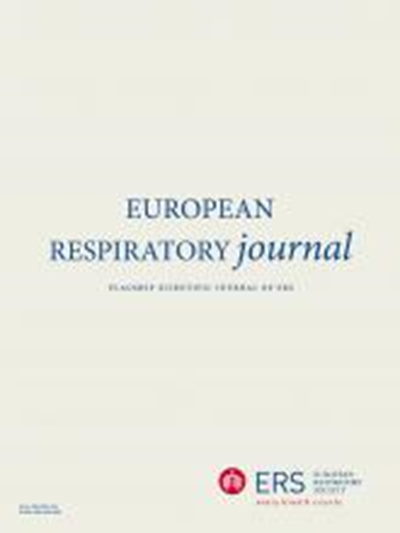重度嗜酸性粒细胞哮喘患者对美泊利珠单抗治疗反应的不同轨迹。
IF 21
1区 医学
Q1 RESPIRATORY SYSTEM
引用次数: 0
摘要
重度嗜酸性粒细胞性哮喘患者的疾病负担较重,可从美泊利珠单抗中获益,美泊利珠单抗可改善症状并减少病情恶化,有可能使一部分患者获得临床缓解。这项研究旨在确定严重嗜酸性粒细胞性哮喘患者对美泊利珠单抗的治疗反应轨迹,并评估临床缓解的实现情况。澳大利亚美泊利珠单抗登记处的数据用于评估3、6和12个月的治疗反应。采用基于组别的轨迹模型确定了治疗反应轨迹。我们比较了不同轨迹之间在12个月时达到临床缓解的比例,临床缓解被定义为症状控制良好、无病情加重、无口服皮质类固醇(OCS)用于哮喘治疗,并使用逻辑回归分析确定了轨迹的基线预测因素。我们确定了三个轨迹组:第 1 组,反应性哮喘,使用 OCS 较少(人数=170);第 2 组,反应性晚发性哮喘(人数=58);第 3 组,阻塞性和反应性较低的哮喘(人数=70)。第一组和第二组获得临床缓解的比例较高,分别为 36.5% 和 25.9%,而第三组仅为 5.7%(P <0.001)。各组的基线预测因素包括:第1组的OCS剂量较低;第2组的FEV1%预测值较高、哮喘生活质量问卷评分较高、OCS剂量较高和鼻息肉较多;第3组为参照组。严重嗜酸性粒细胞性哮喘患者对mepolizumab的治疗反应遵循3种轨迹,实现临床缓解的比例不同,基线特征也不同。治疗反应的变化可能会影响使用美泊利珠单抗治疗所取得的临床缓解。本文章由计算机程序翻译,如有差异,请以英文原文为准。
Distinct trajectories of treatment response to mepolizumab toward remission in patients with severe eosinophilic asthma.
Patients with severe eosinophilic asthma, characterised by a high disease burden, benefit from mepolizumab, which improves symptoms and reduces exacerbations, potentially leading to clinical remission in a subgroup. This study aimed to identify treatment response trajectories to mepolizumab for severe eosinophilic asthma and to assess the achievement of clinical remission.Data from the Australian Mepolizumab Registry were used to assess treatment responses at 3, 6, and 12 months. The treatment response trajectories were identified using a group-based trajectory model. The proportions achieving clinical remission at 12 months, which was defined as well-controlled symptoms, no exacerbations, and no oral corticosteroid (OCS) use for asthma management, were compared between trajectories, and baseline predictors of the trajectories were identified using logistic regression analysis.We identified three trajectory groups: group 1, responsive asthma with less OCS use (n=170); group 2, responsive late-onset asthma (n=58); and group 3, obstructed and less responsive asthma (n=70). Groups 1 and 2 demonstrated higher proportions achieving clinical remission at 36.5% and 25.9%, respectively, compared to group 3 with 5.7% (p <0.001). Baseline predictors for assigned groups included lower OCS dose in group 1; greater FEV1% predicted, higher Asthma Quality of Life Questionnaire score, higher OCS dose, and nasal polyps in group 2; with group 3 as the reference.Treatment response to mepolizumab in severe eosinophilic asthma follows 3 trajectories with varying proportions achieving clinical remission and differing baseline characteristics. Treatment response variability may influence the achievement of clinical remission with mepolizumab therapy.
求助全文
通过发布文献求助,成功后即可免费获取论文全文。
去求助
来源期刊

European Respiratory Journal
医学-呼吸系统
CiteScore
27.50
自引率
3.30%
发文量
345
审稿时长
2-4 weeks
期刊介绍:
The European Respiratory Journal (ERJ) is the flagship journal of the European Respiratory Society. It has a current impact factor of 24.9. The journal covers various aspects of adult and paediatric respiratory medicine, including cell biology, epidemiology, immunology, oncology, pathophysiology, imaging, occupational medicine, intensive care, sleep medicine, and thoracic surgery. In addition to original research material, the ERJ publishes editorial commentaries, reviews, short research letters, and correspondence to the editor. The articles are published continuously and collected into 12 monthly issues in two volumes per year.
 求助内容:
求助内容: 应助结果提醒方式:
应助结果提醒方式:


